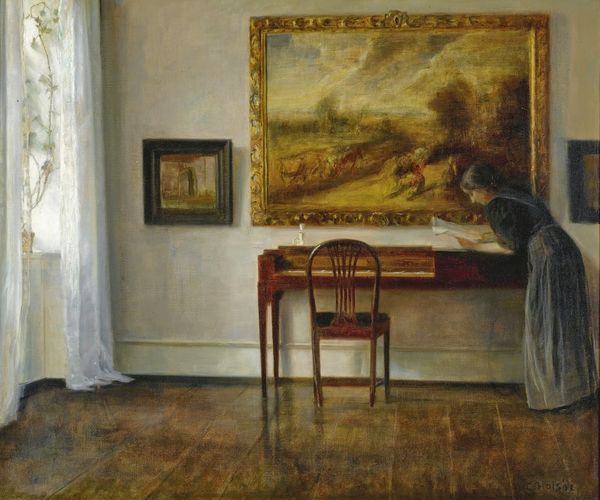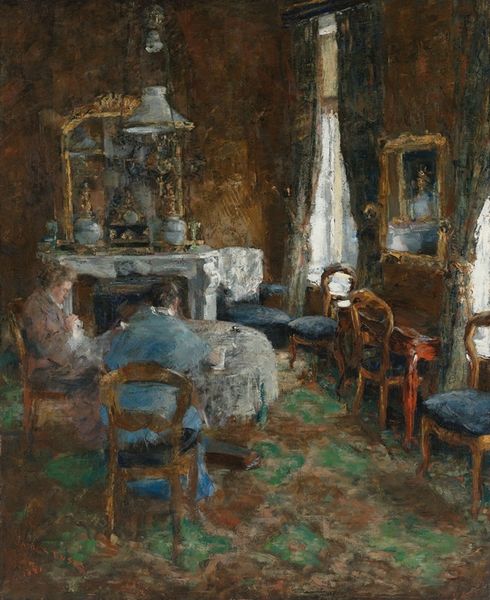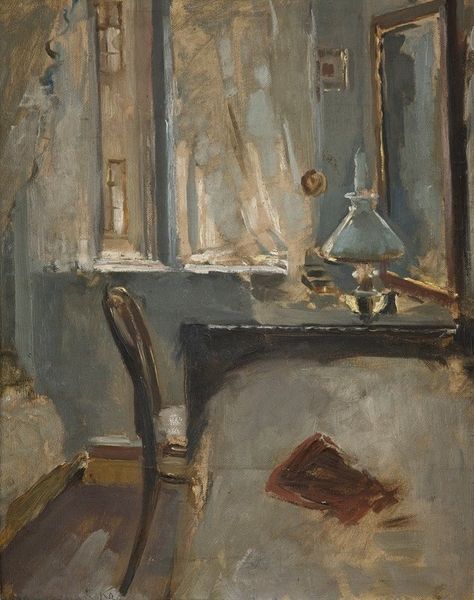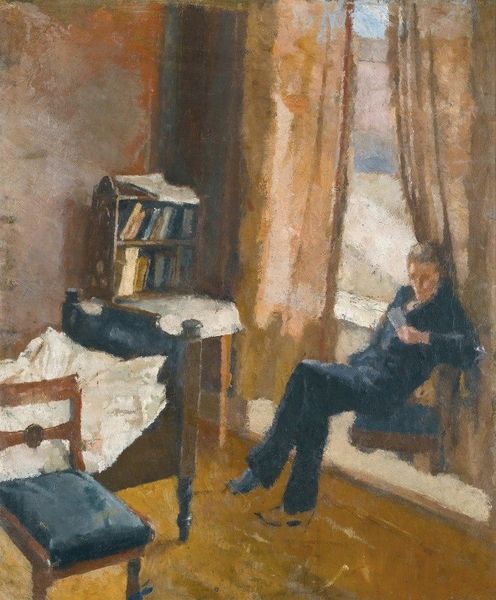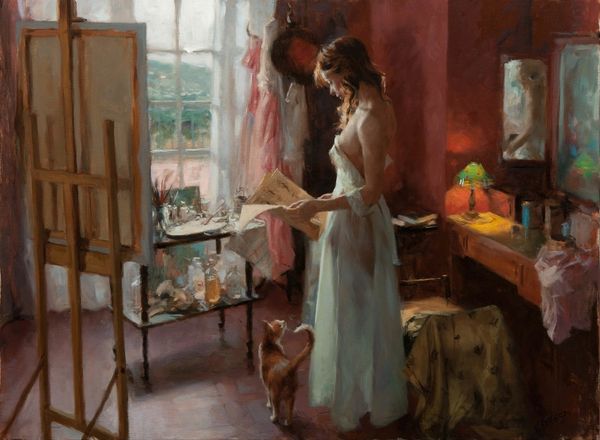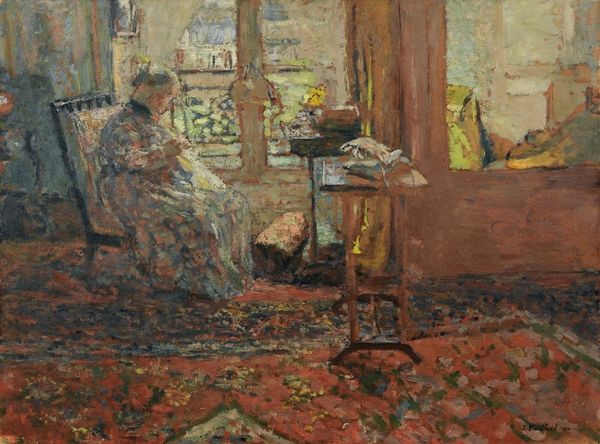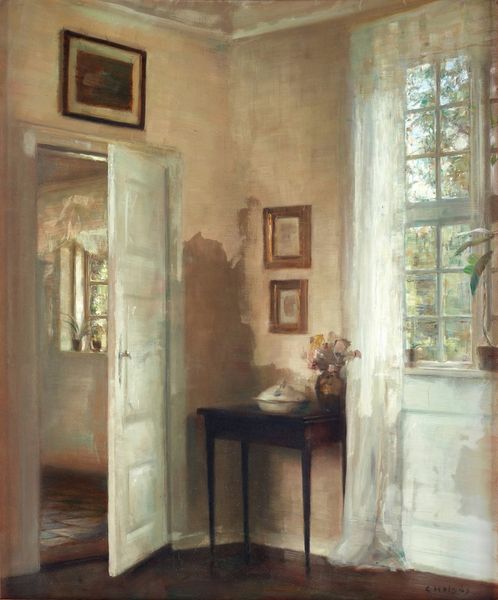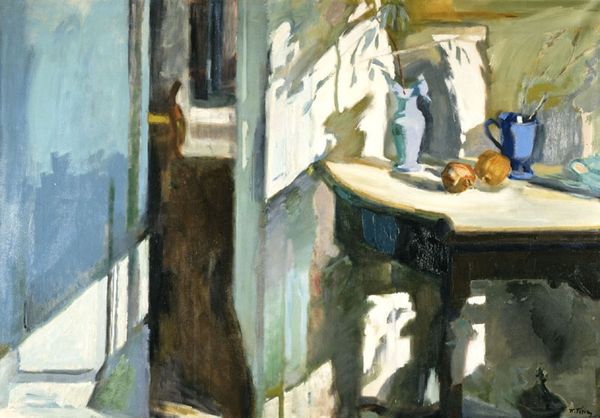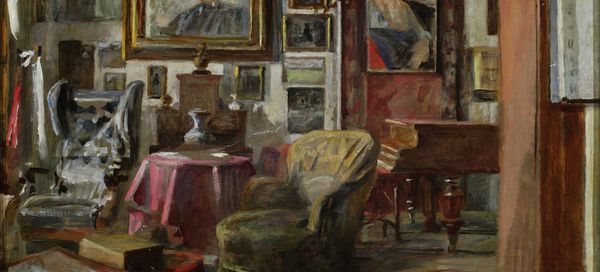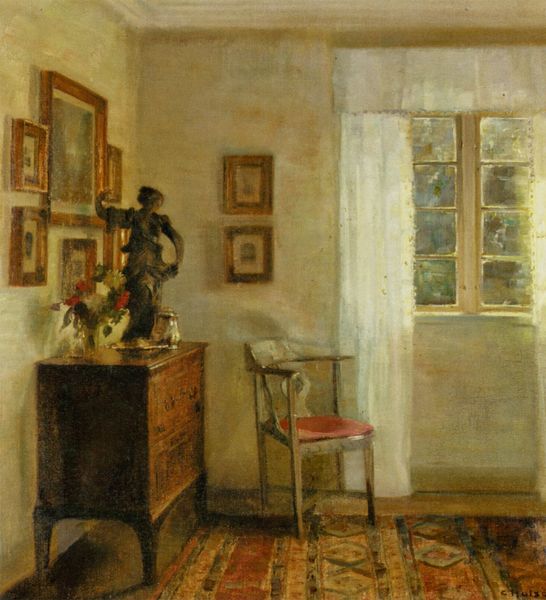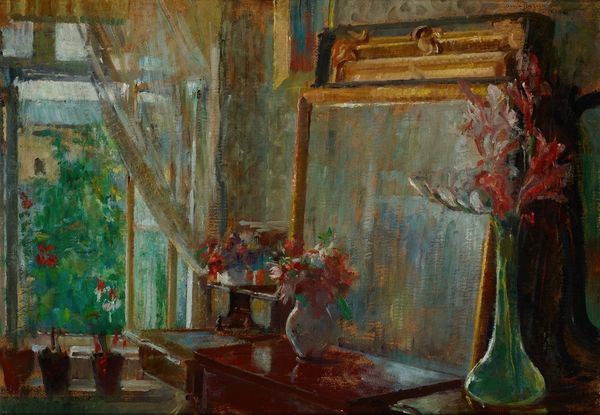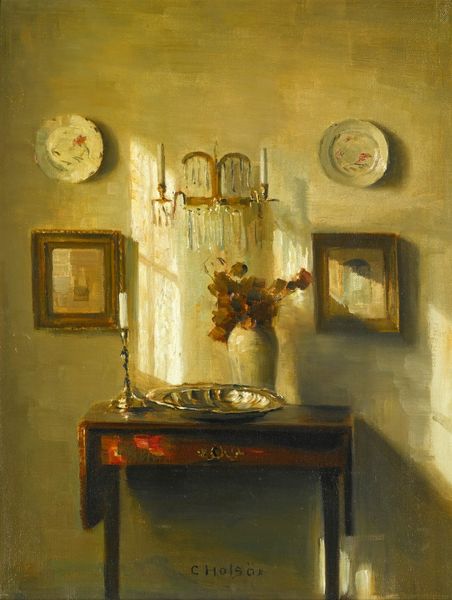
Copyright: Public Domain: Artvee
Editor: This is John Singer Sargent's "An Artist in His Studio," painted in 1904. It's an oil painting and seems to depict… well, an artist in his studio. There’s a very intimate and almost voyeuristic feel to the painting. What strikes you most about it? Curator: I find it compelling how Sargent invites us to consider the very conditions of artistic production. What does it mean to represent labor, especially creative labor? The casual, almost domestic, setting disrupts romantic notions of the artist as divinely inspired. Editor: It does seem very…mundane, almost. With the bed right there. Curator: Exactly! It challenges the separation of the artist’s personal life and their work. How does gender play into this, do you think? Notice the feminine attire draped over the bed. Editor: I hadn't considered that. Perhaps suggesting the artist's relationship to the domestic sphere, maybe the blurred lines between his private and professional life extending to gender roles, too. It does makes you wonder about his, or even Sargent's own relationships. Is this merely a compositional element, or is there a deeper, more personal commentary at play? Curator: Precisely! Sargent’s choices invite these questions. Think, too, about the Impressionist style. How does the fleeting, momentary quality relate to the artist’s process? Does it represent the constant evolution of their work? Editor: It's fascinating how what seems like a simple genre scene opens up so many questions about the artist’s role, gender dynamics, and the creative process itself. Curator: Indeed, it shows us art as a process rooted in complex social and personal contexts, dismantling the myth of the solitary, genius artist. It moves away from purely aesthetic readings towards questioning what art signifies.
Comments
No comments
Be the first to comment and join the conversation on the ultimate creative platform.
